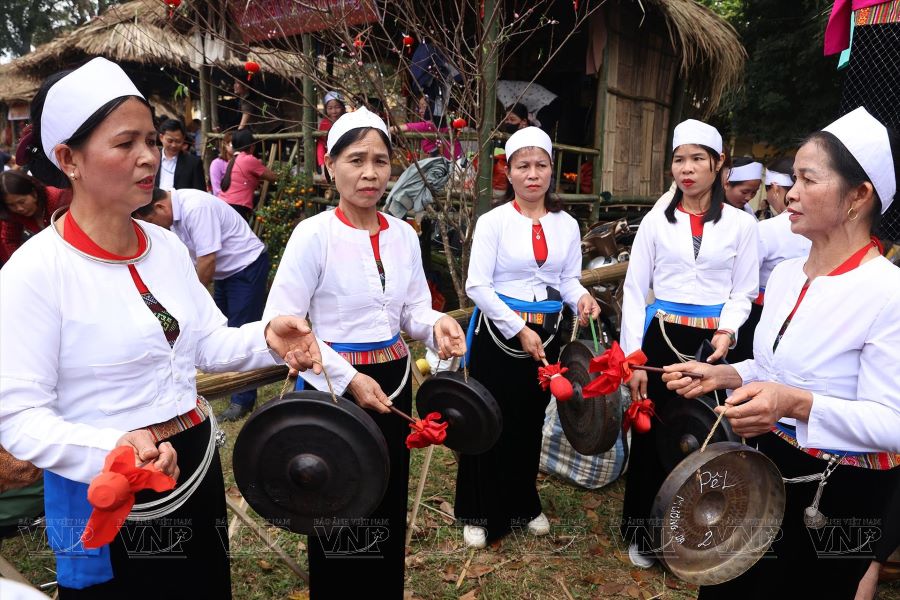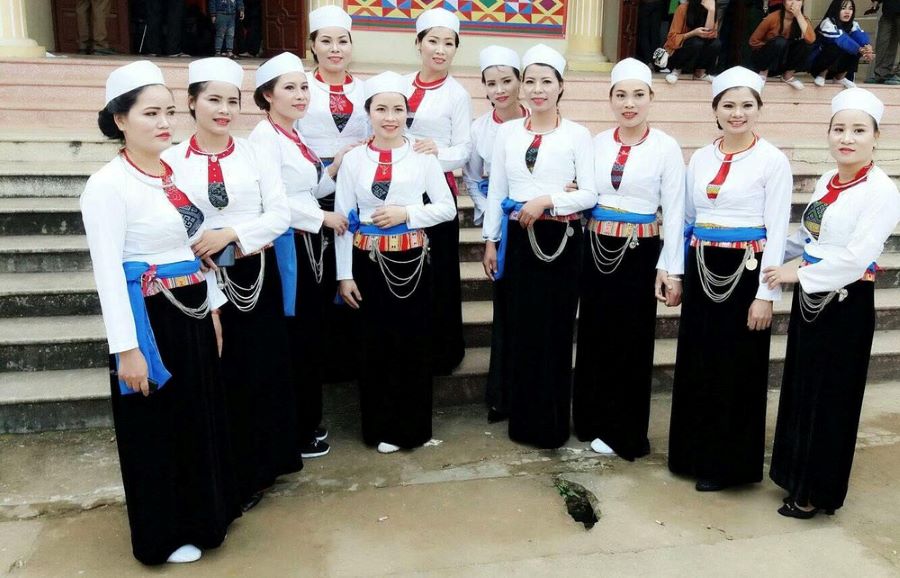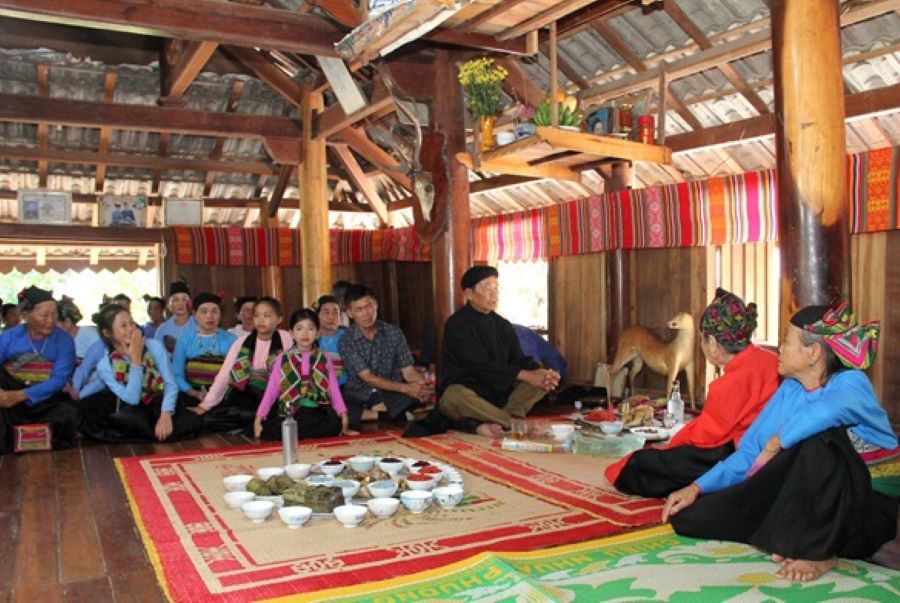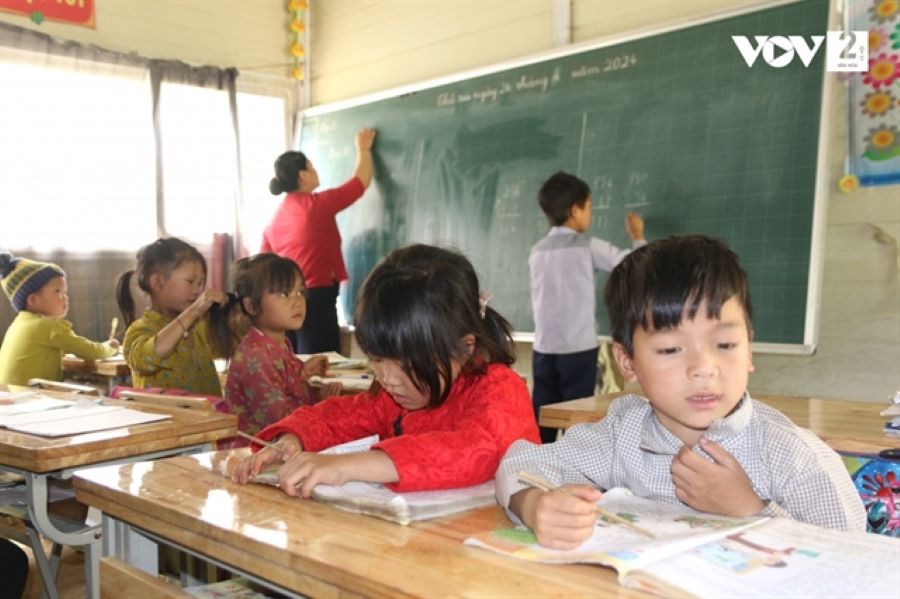Muong Ethnic Group in Vietnam – Culture, Traditions & Origins
Muong ethnic group traditions come alive in this cultural journey through Northern Vietnam, revealing rich heritage, unique customs, and timeless stories shaped by mountains, myths, and generations of resilience.
The Muong Ethnic Group: A Cultural Introduction
If you’re considering Vietnam tours that go beyond the usual tourist routes, there’s no better way to experience the country than to travel to Northern Vietnam. This region offers more than just breathtaking landscapes-it draws you into a vibrant cultural mosaic where ethnic diversity, local traditions, and authentic village life still thrive. As part of this journey, we explore a remarkable thread in that tapestry: the Muong ethnic group. With their rich history, distinctive customs, and scenic mountain villages, the Muong offer a truly immersive cultural experience. Gaining insight into communities like theirs is key to understanding the depth and beauty of Northern Vietnam.
Origins and History: The Deep Roots of the Muong People
The Muong ethnic group is one of Vietnam’s oldest and most deeply rooted indigenous communities. Their ancestral heritage links closely to the ancient Viet-Muong linguistic and cultural traditions. Over time, they have maintained a distinctive identity through practices that set them apart from the Kinh majority. They live mostly in remote, forested highlands, especially in provinces like Hoa Binh and Thanh Hoa. There, archaeological discoveries show signs of human settlements stretching back thousands of years.

Daily life beautifully captured among the resilient Muong ethnic group in Vietnam.
Moreover, visiting their villages offers a powerful sense of connection to the past. You can hear history in oral storytelling, see it in ritual ceremonies and feel it in everyday life. Unlike fast-paced cities, these places offer a slower rhythm where tradition thrives. Community values remain strong and stories are shared across generations.
If your passion for history inspires your travels, then this cultural depth is a rare find. The experience offers more than just sightseeing. It allows you to witness living heritage passed down for centuries. Therefore, a journey to a Muong village is not only educational but also deeply moving. Each moment becomes an opportunity to engage with a rich, authentic past that continues to shape the present.
Population and Geographic Distribution: High Hills and Quiet Valleys
Today, the Muong ethnic group includes over 1.4 million individuals. They are the third-largest minority in Vietnam by population. Most live in the northern midlands and mountainous regions, where misty hills and lush valleys stretch for miles. Their communities often lie in secluded areas, either nestled in green valleys or standing quietly along forested slopes.
In these serene landscapes, daily life moves at a peaceful and grounding pace. Their traditional homes are stilt houses, designed with function and harmony in mind. Elevated from the ground, these structures adapt perfectly to uneven terrain. They also show a deep respect for the environment that surrounds them.
Moreover, the surrounding scenery is nothing short of breathtaking. Towering mountains, terraced fields and flowing streams paint a picture of raw beauty. If you enjoy cultural experiences and time in nature, this region offers both in abundance. The area is ideal for hiking, photography and quiet reflection away from crowded tourist paths.
Therefore, exploring a Muong village offers more than just a glimpse of daily life. It gives you a deeper appreciation for tradition and resilience. Every step you take feels like a step into a preserved way of life that still thrives today.
Language and Identity: The Voice of Heritage
The Muong language belongs to the Vietic branch of the Austroasiatic language family and shares ancient roots with Vietnamese. Over centuries, it has developed on its own path, forming distinct idioms and pronunciations. Many speakers today are bilingual, fluent in both Muong and Vietnamese. This blend of linguistic fluency shows adaptability while maintaining strong cultural identity.
Interestingly, Muong language has all six tones found in Vietnamese. However, the nang tone appears only in Phu Tho and Thanh Hoa provinces. In Hoa Binh Province, this tone merges with the sac tone, creating a unique regional difference in pronunciation. These tone variations offer insights into the region’s historical and cultural diversity.
Moreover, we found that language holds deep meaning in Muong communities. It goes beyond speaking-it connects people to heritage and memory. During our time there, it became clear that language helps carry values, folk songs and ancestral stories from one generation to the next.
This pride in linguistic identity often emerges during festivals or storytelling nights. If your trip aligns with these local events, you’ll witness living tradition firsthand. Therefore, exploring the role of language in Muong life adds another dimension to understanding their enduring and vibrant culture.
Traditional Clothing of the Muong People
The traditional clothing of the Muong people reflects their cultural identity and connection to nature. Muong women typically wear long skirts (called “váy”) made from handwoven fabrics with simple yet elegant patterns, often in dark indigo or black. Their blouses are usually white or light-colored, complemented by silver jewelry and colorful waistbands. Men wear short vests and long pants, also in dark tones, with simple embroidery. The clothing not only serves practical purposes but also symbolizes the Muong people’s sense of harmony with their environment and pride in their heritage. Today, traditional attire is still worn during festivals, weddings, and cultural celebrations.

Traditional clothes reflect the vibrant culture of the Muong ethnic group beautifully.
Muong Traditional Costume Rental
TrangPhucBongSen.vn
- Offers Muong women’s set: includes “yem” (undershirt), outer coat, skirt, sash, and traditional hat
trangphucbongsen.vn - Price information not listed openly-typically you must call or inquire to get a quote. Likely in the low hundreds of thousands VND (≈USD 5–15).
Traditional Customs and Festivals: Life in Rhythm With Nature
The Muong calendar follows the rhythms of agriculture, marking seasons with festivals rooted in planting and harvest traditions. Among the most meaningful celebrations is the Xen Muong Festival, a time for honoring ancestors and thanking nature. This event features ceremonial offerings, traditional games and musical performances that light up the village with joy.

Muong ethnic group gathers joyfully for sacred rituals during Xen Muong Festival.
We were fortunate to witness one of these festivals during our visit. The atmosphere was welcoming and filled with shared purpose. Elders chanted prayers, children played folk games and families gathered to share food. It was not just a celebration but a living expression of unity and gratitude.
Moreover, these festivals offer travelers an authentic glimpse into Muong culture. Guests are often invited to join the ceremonies, making the experience deeply personal and memorable. You may even find yourself dancing beside locals under lantern-lit skies.
These vibrant moments feel especially meaningful when paired with visits to Ethnic Minorities Markets, where the energy of community thrives. Handwoven textiles, herbal remedies and local dishes reflect the deep traditions of the region. Each stall tells a story and each exchange fosters cultural understanding. Therefore, participating in these events adds unforgettable depth to your journey through the highland villages of northern Vietnam.
Religion and Spiritual Beliefs: Harmony With the Natural World
The spiritual beliefs of the Muong reflect a rich blend of animism, ancestor worship and elements of Vietnamese Buddhism. At the heart of this belief system lies deep respect for unseen forces and ancestral spirits. Most families maintain household altars, where they offer incense, fruits and symbolic gifts to honor their ancestors. These daily rituals serve as a way to seek protection and guidance in everyday life.
In addition, nature holds a sacred presence in their worldview. Certain forests, rivers and towering trees are considered spiritually significant. These places are not just part of the landscape-they are living spaces where spirits dwell. As a result, many ceremonies take place outdoors, guided by shamans and village elders who understand traditional customs.

Spiritual rituals reflect deep-rooted beliefs of the Muong ethnic group’s culture.
We noticed that spiritual life is not confined to temples or specific days. Instead, it flows naturally into how the Muong interact with the environment. If you’re planning a Vietnam Adventure and Eco Tour, visiting these sacred natural sites brings you closer to understanding how belief and ecology connect.
Therefore, experiencing Muong spirituality offers more than insight into religion. It reveals a worldview where nature, family and memory form a meaningful and interconnected whole. Each moment invites quiet reflection and a deeper cultural appreciation.
Agriculture and Economy: A Life Shaped by the Land
Farming traditions are central to the Muong way of life and form the base of their local economy. Rice is their main crop, often grown in terraced fields that follow the curves of the mountains. Families also plant maize, cassava and native fruits suited to the highland climate. Livestock such as pigs and chickens support both daily meals and small-scale trade.
Many households also practice handicraft skills like weaving and basket-making. These crafts offer extra income and help preserve cultural techniques that reflect Muong identity. The work is often done by hand using locally sourced materials.
We spent time on a hillside farm and found the experience meaningful. Watching daily routines unfold gave us a better understanding of rural life shaped by tradition. These visits are often left out of typical travel plans. Choosing local guides allows you to see this world more clearly and respectfully. Spending time with farming communities offers a quiet but powerful glimpse into resilience and cultural pride.
Family and Social Structure: Unity in Tradition
Family bonds are the foundation of Muong society, shaping both daily life and long-term traditions. Extended families often live in close proximity, creating a network of support that strengthens through generations. Whether during weddings, funerals or seasonal work, relatives come together with a strong sense of duty and care.
Elders hold great influence and are respected for their wisdom in resolving conflicts and guiding younger members. Their role is not only practical but symbolic, reflecting the deep-rooted social structure of the community.

Muong ethnic group values respect, harmony, and connection in everyday social life.
This structure appears clearly in traditional music and oral storytelling. Many folk songs and epics focus on themes of family loyalty, unity and shared responsibility. We listened to one such performance around a fire and felt the warmth behind every word.
The hospitality extended to guests is heartfelt and generous. These values create a meaningful contrast to urban environments where such close-knit systems are less common. Experiencing them firsthand leaves a lasting impression.
Education and Government Policies: Progress With Cultural Sensitivity
The Vietnamese government has taken meaningful steps to improve education access in ethnic minority regions across the country. New schools have been built in remote villages, bringing classrooms closer to communities that once had to travel far. Bilingual education programs have also been introduced to help students transition from their native languages to Vietnamese.
These efforts support learning while respecting cultural identity. Teachers often incorporate local customs and stories into lessons, which makes learning more engaging and relevant. However, challenges still exist. Many schools face shortages of materials and trained local educators, especially those familiar with ethnic traditions.
During our visit to northern Muong villages, we met students who showed genuine excitement about learning. Their curiosity was strongest when lessons included familiar traditions and community knowledge. This blend of formal education and cultural connection helps students grow with confidence. Supporting education in these areas is not just about access. It is about building futures rooted in heritage.

Mountainous schools inspire Muong ethnic group children to actively participate in learning.
Modern Challenges and Development: Balancing Change and Identity
Like many ethnic communities in Vietnam, the Muong are facing the pressures of modernization as their environment rapidly changes. Economic growth, increased mobility and new technologies bring both promise and uncertainty. While new jobs and better infrastructure improve access, these changes also put stress on long-standing traditions and daily routines.
Large-scale projects like road construction and dam development often affect agricultural land or force families to relocate. This disruption challenges not only livelihoods but also cultural continuity. At the same time, there are more positive paths forward. Carefully planned initiatives such as a Northwestern Vietnam Short Motorbike Trip can create income and preserve identity through meaningful cultural exchange.
We found that local guides play a vital role in making tourism more respectful and sustainable. Their knowledge ensures that visits benefit communities directly and protect their heritage. Choosing the right kind of travel makes a real difference in how change is experienced on the ground.
Practical Travel Tips for Visiting the Muong Ethnic Group
Best Time to Visit: Plan your trip in spring (February-April) or autumn (September-November) to enjoy cooler temperatures, blooming landscapes, and cultural festivals like Xen Muong.
Getting There: Many Muong villages are located in mountainous provinces like Hoa Binh or Thanh Hoa. Booking a Vietnam car rental with driver is the easiest and most comfortable way to reach these remote areas.
Recommended Activities:
- Stay in Muong homestays to experience traditional stilt houses and daily village life
- Hike through lush forests and terraced rice fields guided by locals
- Take part in rice wine-making or join in weaving and cooking activities
- Attend a local festival to see traditional dress, gongs, and folk performances
What to Pack:
- Light, breathable layers for hiking and warm clothing for cool evenings
- Respectful attire when visiting temples or participating in community rituals
- Sturdy walking shoes suitable for uneven mountain paths
Real Vietnam, Real Connection
When you travel to Vietnam, don’t just pass through it-connect with it. The stories, traditions, and warmth of communities like the Muong ethnic group offer more than just sightseeing. They offer meaning.
Our tours are crafted to bring you into the heart of Northern Vietnam, where culture and nature come alive together. Whether you’re walking through terraced fields, sharing a home-cooked meal, or joining a local celebration, these are the moments that stay with you.
Skip the surface-level stops. Choose a journey that’s personal, authentic, and unforgettable.
Book your tour now and experience Vietnam the way it was meant to be.
FAQs
Start planning your tailor-made Vietnam tour by contacting one of our specialists…







